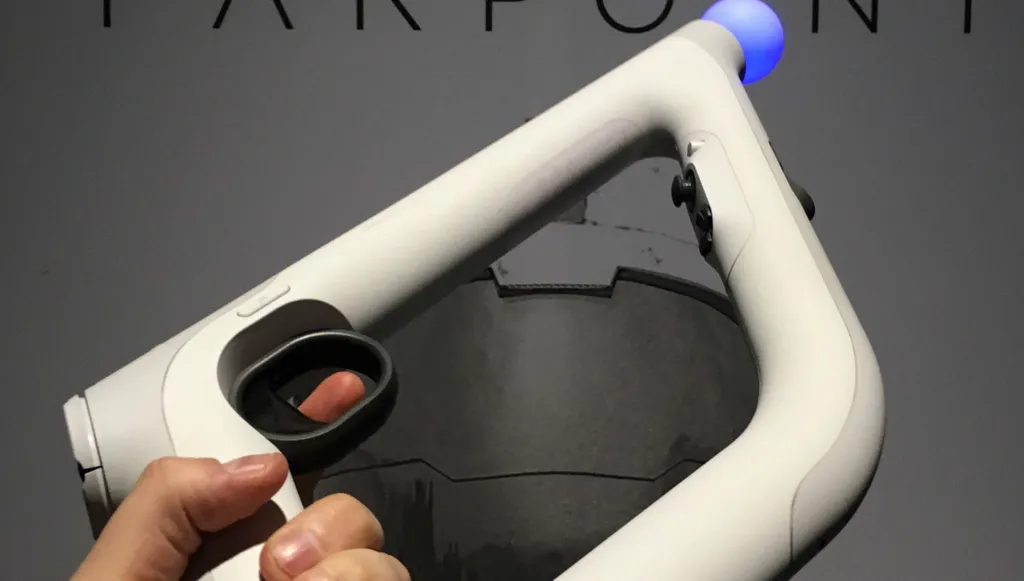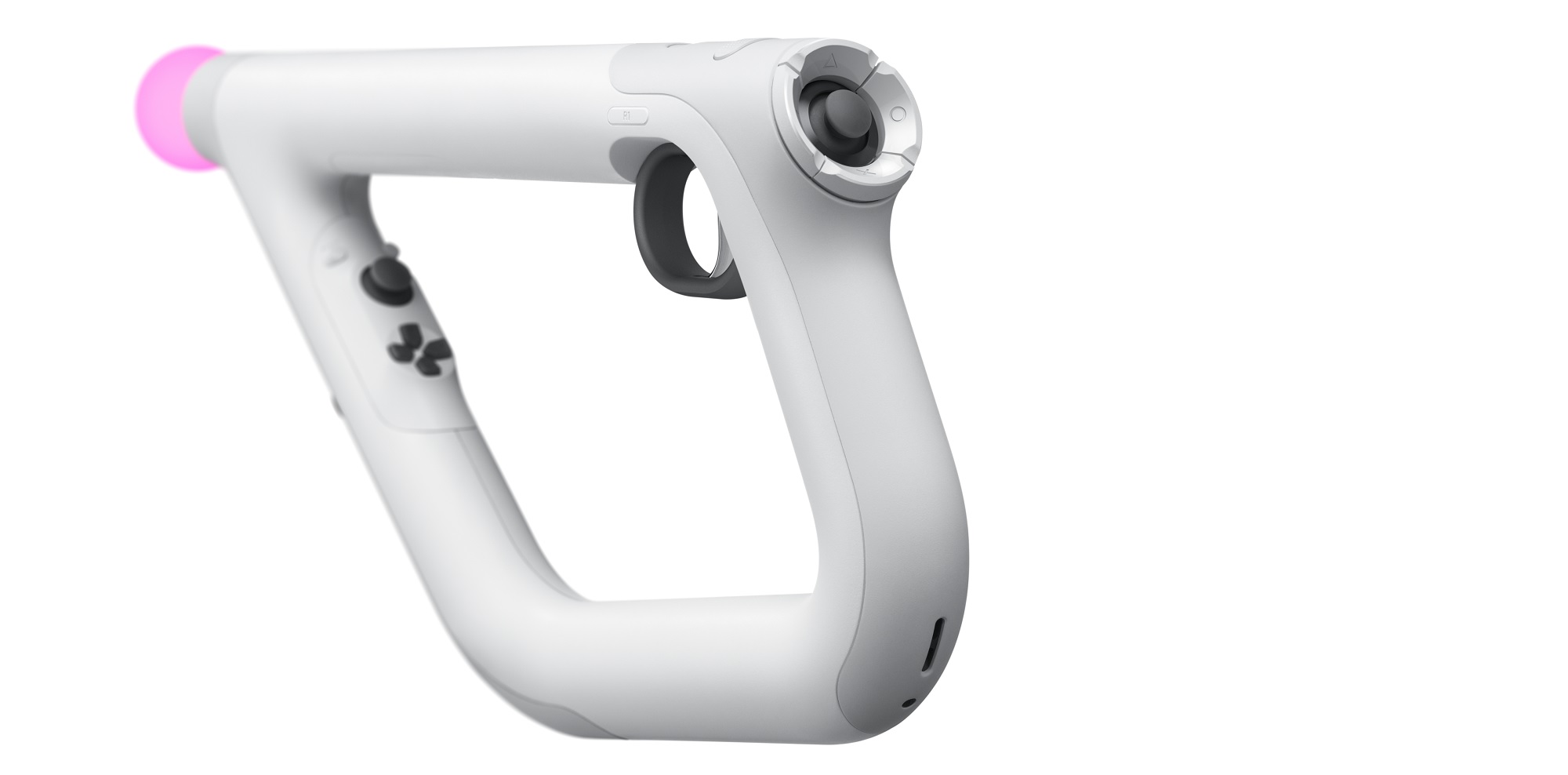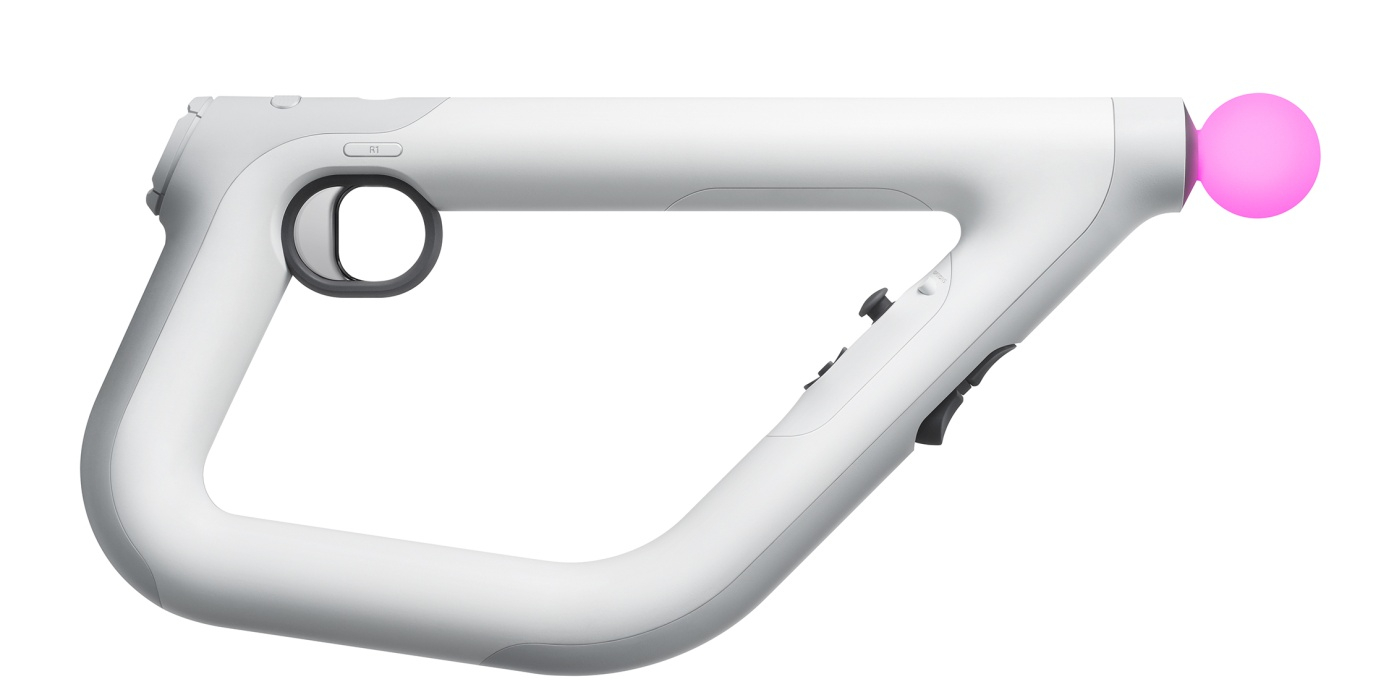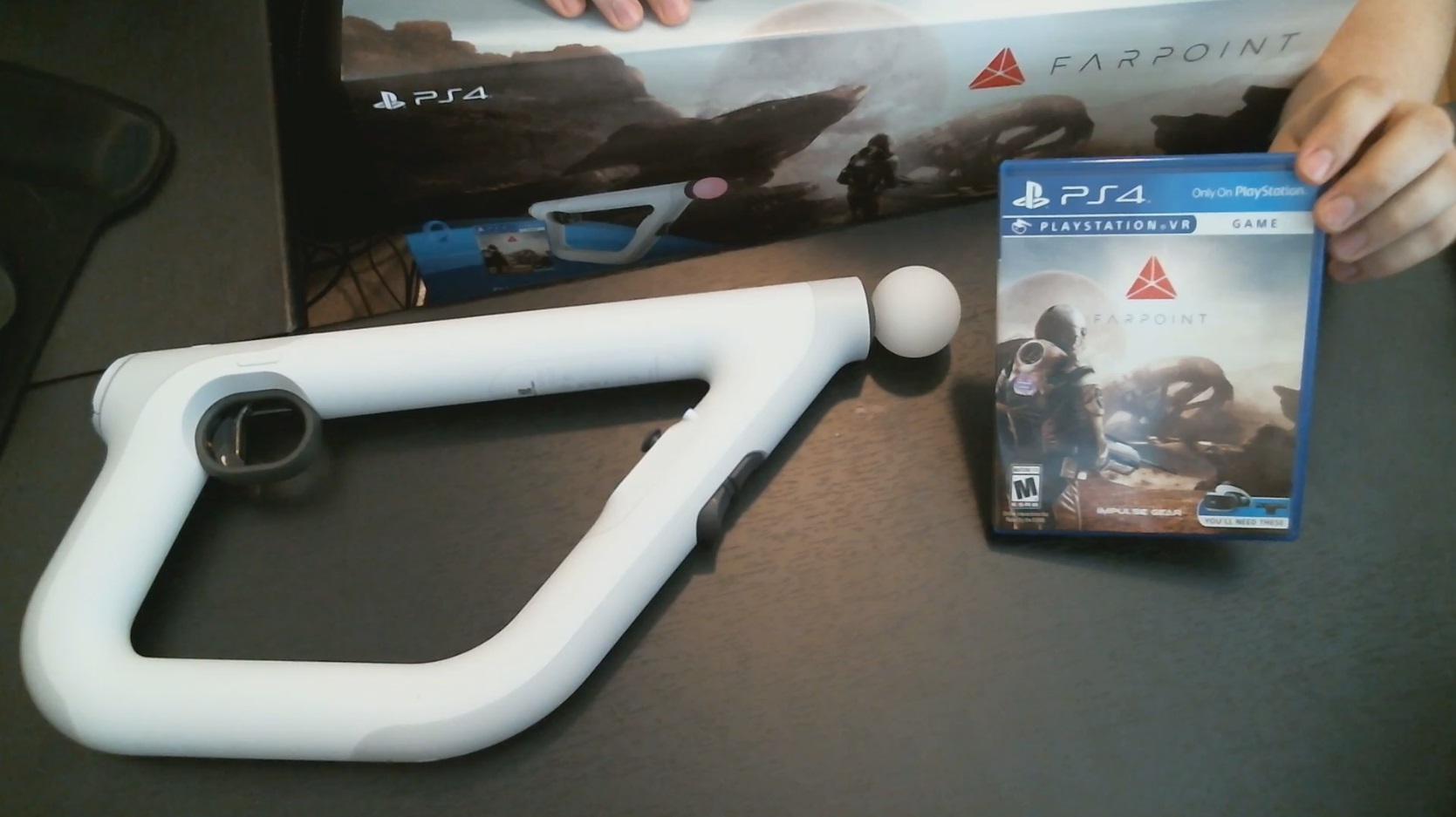I’ve never really cared for peripheral devices. As much as I loved playing Guitar Hero and Rock Band (and I really loved it, ask any of my past neighbors) I still hated having to plug extra stuff into my system. Plus, it takes up so much extra room and it never, ever, works as well as advertised.
After VR headsets started coming out though I had to get used to having a clunky add-on around really quickly. But now that we’re a full year into the life cycle of the consumer VR market peripherals for add-ons (such as the PlayStation VR (PSVR) Aim Controller for the PSVR itself) are now a thing and the amount of space they take up is more than doubled.
But don’t worry. I’m here to tell you that the PSVR Aim Controller is, despite the odds, an extra hunk of plastic all PSVR owners are gonna want to have laying around the house.
(Note: The above video was recorded and edited last week, prior to the game’s launch. Apologies for the outdated references.)
Stylistically it isn’t appealing at all. Frankly, it’s ugly. The grayish-white color looks unfinished and the visual design clearly looks like a rejected gadget that no kid wanted from the toy store. In that sense, it fits right in with the dorky light-bulb style of the PlayStation Move controllers. In fact, it even has a similar bulb at the end.
Luckily though, when you’re in VR, it doesn’t matter what the thing in your hand looks like — it only matters how it feels to use and in terms of pure ergonomics I honestly can’t think of a single issue. The best design decision that Sony (and Impulse Gear, developers of Farpoint) made while crafting the gun is that it’s 100% ambidextrous — meaning it can be used either right or left-handed without any issues.
Every button is either duplicated on both sides or easily accessible regardless of hand positioning, but at the same time, it isn’t uncomfortable, which is typically the case with most other dual-handed devices such as computer mice.
The only game I was able to adequately test it out with that featured full support as of the time of this publication was Farpoint. The game supported both standard DualShock 4 gameplay, as well as the PSVR Aim Controller, and I can say without a doubt that the Aim dramatically improved the game.
The closest comparison would be the difference between playing a seated gamepad VR game and one that asks you to stand with the Oculus Touch controllers or HTC Vive wands. However, the immersion is even beyond that. For the specific use cases of holding a two-handed rifle in your hands for VR, it doesn’t get much better than the PSVR Aim Controller.
In terms of tracking effectiveness, it seemed to work about the same, or slightly better than, PlayStation’s Move controllers. The light bulb at the end has to be pointed at the camera at all times and there is a definitive floor and ceiling to the tracking range.
For example, if I lift the controller up above my head or hold it too far below my waist, the camera can no longer see it. Erratic and quick movements also caused the camera to get fussy and lose track of my exact position.
In most cases this is fine but if I’m in the middle of an intense firefight, it sucks that I can’t spin around behind me and have to instead use the analog stick to turn. Or I can’t kneel down to take cover behind something because the camera can no longer see where the gun is located.
For what it’s worth, a lot of these issues could be solved if Sony introduced a second tracking camera or another better way to track the lights of the headset and controllers.
Final Recommendation: Absolutely
Sony’s PlayStation VR Aim Controller is a breath of fresh air for the PSVR platform. While it’s held back by the frustrating technical limitations of the hardware, it brings a much-needed added layer of real immersion to appropriate experiences. If you plan on playing Farpoint or any other game that would benefit from a two-handed rifel peripheral, then it’s a must-buy device.





























